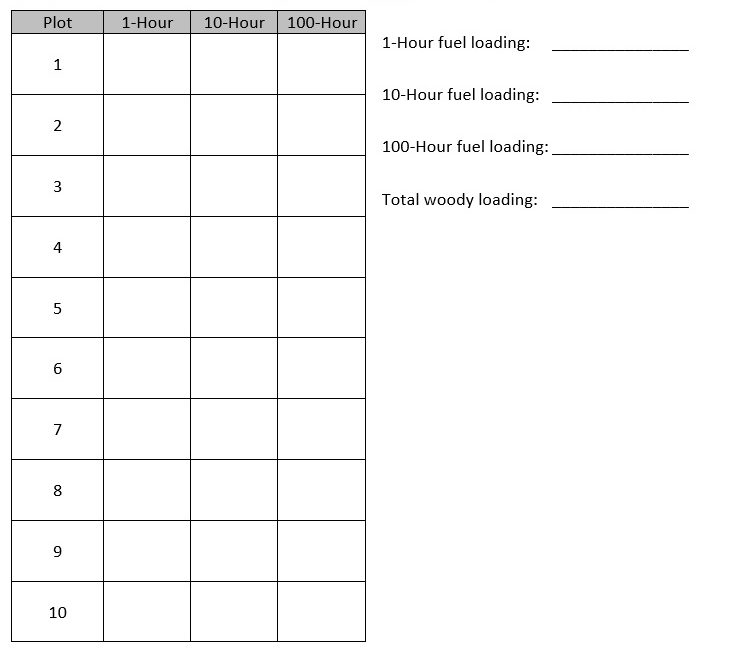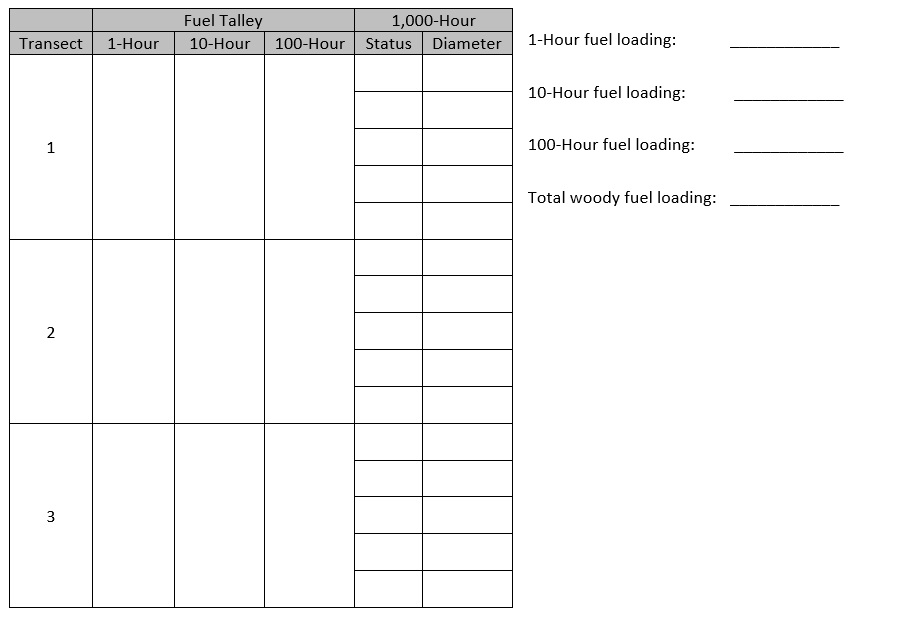F 321 – Lab Exercise #3
Fuels Sampling Refresher
1. Photoload Sampling (Individual/Pairs)
Along the west side of Sherwood Forest, you will find ten 1 m2 sampling framed marked with pin flags. Using the provided Photoload series for fine woody debris, visually estimate the fuel loading in the 1, 10, and 100-hour fuel component classes. Start with the North most plot and work your way South. From your estimates, calculate the average 1, 10, 100-hour and total fine woody fuel loading (kg per hectare).

Extra Credit: You need to correct your visual estimates for any bias they may contain. Do this by using the set of extracted plot values emailed to the class to create a regression that you can apply to correct your estimates. See the Tinkham et al. (2016) paper on Canvas for a more detailed description of this method. Once the values are corrected, recalculate the 1, 10, 100-hour, and total fine woody fuel loading. Attach a separate sheet of paper describing the difference between the visual estimates and showing the corrected fuel loadings your work, including any work done in Excel.
2. Line Intercept (Groups)
Inventory the 3 marked sample transects on the eastern side of Sherwood Forest to determine the 1, 10, and 100-hour tally, along with diameter and status of 1,000-hour fuels. Tally 1-Hour particles for the first 6 feet, 10-Hour for the first 12-feet, and 100 and 1,000-Hour particles for all 30 feet. After collecting the values, calculate the average 1, 10, 100, and sound and rotten 1,000-hour and total woody fuel loading (kg per hectare). Assume you are inventorying non-slash fuels in a ponderosa pine dominated stand.

3. Canopy Fuels Characterization (Group)
Inventory the four variable radius plots using a 20 BAF with the given equipment in Sherwood Forest. Using your device, determine how many in trees should be counted at each sample point. Tree measurements should be taken starting from north and rotating clockwise, record the DBH of every tree and the height of trees 1, 3, and 5 in each plot (measure tree 4 when there are less than 5 trees in a plot). From your plots, calculate the parameters need for calculating stand Canopy Base Height, Canopy Fuel Loading, and Canopy Bulk Density using equations from Cruz et al. (2003), you should assume Sherwood Forest is a stand of ponderosa pine (Be careful with your units and be sure to label your answers).

